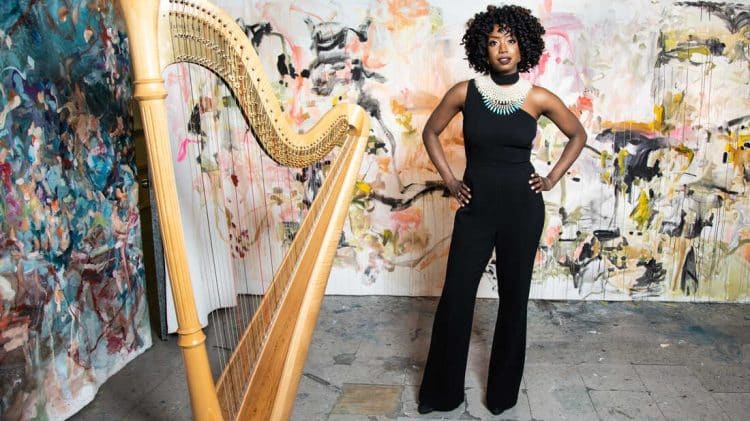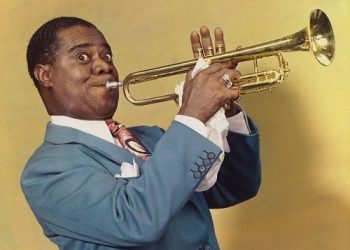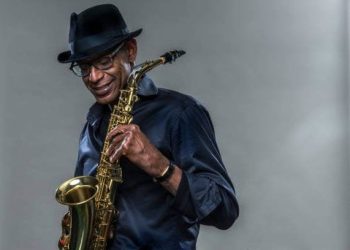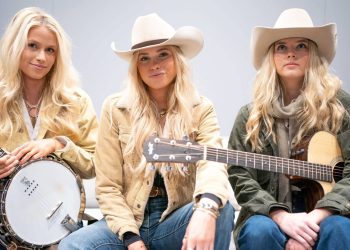Harp players, or harpists, are musicians who master the intricate art of playing the harp, one of the oldest and most visually striking musical instruments. Known for its ethereal sound, the harp has a series of strings stretched over a large frame, played by plucking with the fingers. Harpists are required to have exceptional manual dexterity, as playing the harp involves using both hands to create melody and harmony, often moving across a wide range of strings with precision and grace.
The role of the harpist transcends simple musical performance; it embodies a deep understanding of the instrument’s unique mechanics, including the use of pedals (in the case of pedal harps) to change the pitch of the strings, allowing for chromatic alterations within pieces. Harp players perform in a variety of settings, from solo recitals and chamber music ensembles to symphony orchestras and operatic productions, showcasing the instrument’s versatility across genres from classical and folk to contemporary and popular music.
The journey to becoming a proficient harpist requires years of dedicated practice and study, often beginning at a young age. Harpists must not only master the technical aspects of their instrument but also develop a nuanced musicality and expressive capability, allowing them to convey a wide range of emotions and narratives through their performance. Their artistry brings a unique and captivating dimension to the music world, enchanting audiences with the harp’s distinctive sonority and the skillful finesse of their playing.
1. Marcel Grandjany
Marcel Grandjany (1891-1975) was a French-American harpist and composer, renowned for his profound influence on harp pedagogy and performance. Born in Paris, Grandjany exhibited musical brilliance from a young age, studying at the Paris Conservatoire before embarking on an international career. Settling in the United States, he became a pivotal figure in American harp education, teaching at the Juilliard School and composing extensively for the harp. His compositions and arrangements are staples of the harp repertoire, celebrated for their lyrical beauty and technical demands. Grandjany’s dedication to teaching and his innovative techniques have left an indelible mark on generations of harpists, solidifying his legacy as a master of the instrument.
2. Pablo Casals
Pablo Casals (1876-1973) was a Spanish cellist, conductor, and composer, revered as one of the greatest musicians of the 20th century. His profound interpretations, especially of Bach’s Cello Suites, which he brought into the mainstream of concert repertoire, are legendary for their depth, sensitivity, and technical mastery. Casals was not just a virtuoso cellist but also a passionate advocate for peace and justice, using his music as a platform for social change. His legacy extends beyond his recordings and performances to the masterclasses and music festivals he founded, nurturing generations of musicians. Casals’ enduring influence reshaped the world’s understanding and appreciation of cello music, making him a towering figure in classical music history.
3. Carlos Salzedo
Carlos Salzedo (1885-1961) was a visionary French-American harpist, composer, and teacher who revolutionized the harp’s role in the 20th century. Born in France, Salzedo’s prodigious talent led him to the Paris Conservatoire, where he garnered early acclaim. Relocating to the United States, he co-founded the International Composers’ Guild, advocating for contemporary music. Salzedo’s innovative playing techniques, which emphasized sonority, rhythm, and color, transformed harp pedagogy and performance. His compositions and arrangements expanded the instrument’s repertoire, blending traditional craftsmanship with avant-garde elements. As a dedicated educator, Salzedo founded the Salzedo Harp Colony, nurturing countless harpists with his forward-thinking approach. His legacy endures through his influential works and teachings.
4. Harpo Marx
Harpo Marx (1888-1964), born Adolph Marx, was an iconic American comedian, actor, and musician, best known as the silent, harp-playing member of the Marx Brothers comedy team. With his signature red wig, trench coat, and horn, Harpo communicated through pantomime and props, his expressive face and physical comedy transcending the need for words. His harp playing, an integral part of his performances, showcased not just his comedic genius but also genuine musical talent, bringing a unique blend of humor and beauty to his films. Harpo’s character, a blend of innocence and mischief, left an indelible mark on comedy, making him a beloved figure in film history and a master of visual humor.
5. Judy Loman
Judy Loman, a distinguished Canadian harpist, has made significant contributions to the world of music both as a performer and educator. Born in the United States, Loman moved to Canada where she became the principal harpist for the Toronto Symphony Orchestra, a position she held with acclaim for several decades. Her playing is celebrated for its exquisite technique, nuanced phrasing, and expressive depth. As a dedicated teacher at the Royal Conservatory of Music in Toronto, Loman has nurtured a generation of harpists, imparting her deep musical insights and technical mastery. She has commissioned and premiered numerous works, expanding the harp repertoire and elevating the instrument’s presence on the international stage.
6. Yolanda Kondonassis
Yolanda Kondonassis is an internationally acclaimed American harpist, celebrated for her extraordinary technique, nuanced interpretations, and innovative contributions to the harp repertoire. Since her debut at age 18 with the New York Philharmonic, Kondonassis has become one of the world’s premier solo harpists, performing with leading orchestras, in recitals, and in chamber music ensembles globally. She has expanded the harp’s presence in contemporary music, commissioning and premiering numerous works by prominent composers. Kondonassis is also a dedicated educator and author, sharing her passion and knowledge through teaching, masterclasses, and publications. Her discography includes over a dozen albums, earning critical acclaim and several awards, solidifying her status as a pivotal figure in classical music and harp performance.
7. Nicanor Zabaleta
Nicanor Zabaleta (1907-1993) was a Spanish harpist renowned for his exceptional skill, profound musicality, and significant contributions to the harp repertoire. Born in San Sebastián, Spain, Zabaleta began playing the harp at a young age, later studying in Paris and quickly establishing himself as a leading figure in classical music. His virtuosic performances and recordings helped elevate the harp from an orchestral accompaniment to a solo instrument of great expressive power. Zabaleta’s dedication to expanding the harp’s repertoire led to numerous commissions from contemporary composers, enriching the instrument’s literature. His global tours, masterclasses, and recordings have left a lasting legacy, inspiring generations of harpists worldwide.
8. Mildred Dilling
Mildred Dilling (1894-1982) was a pioneering American harpist, renowned for her extensive career as a performer, educator, and advocate for the harp. With a repertoire spanning classical, folk, and contemporary music, Dilling popularized the harp through her performances across the United States and abroad, including in the White House for several Presidents. She was known for her exceptional technique, expressive playing, and dedication to sharing the beauty of the harp with a broad audience. Dilling taught countless students, many of whom became prominent harpists, contributing significantly to the instrument’s growth in popularity. Her legacy is preserved through her recordings, arrangements, and the lasting impact of her teaching.
9. Amelia The Human
Amelia The Human, as a fictional character, might be envisioned as a groundbreaking figure in a narrative exploring themes of humanity, technology, and identity. In this imagined universe, Amelia embodies the convergence of advanced artificial intelligence and human consciousness, challenging the boundaries between human and machine. Her story unfolds in a near-future setting, where she navigates complex social and ethical dilemmas, seeking to understand her place in a world that views her as both an anomaly and a bridge between two realms. Amelia’s journey is marked by her quest for self-discovery, connection, and the definition of what it means to be truly “human” in an era where the lines between biological life and artificial existence blur. Through her experiences, she becomes a symbol of hope and a catalyst for discussions on empathy, rights, and the essence of consciousness.
10. Sarah Chang
Sarah Chang is a celebrated American violinist, known for her profound musicality and technical prowess. Born in 1980 in Philadelphia to Korean parents, Chang was recognized as a child prodigy, making her debut with the New York Philharmonic at just eight years old. Her career has since flourished, with performances in the world’s leading concert halls alongside prestigious orchestras and conductors. Chang’s expansive repertoire includes the major violin concertos, chamber works, and contemporary pieces. Her emotional depth and vibrant performances have captivated audiences globally, earning her accolades and a distinguished place among the foremost violinists of her generation. Chang’s recordings reflect her versatility and sensitivity as an artist, contributing significantly to the classical music landscape.
11. Alice Chalifoux
Alice Chalifoux (1908-2008) was a celebrated American harpist whose career spanned over eight decades, marked by her exquisite technique, musicality, and dedication to teaching. As principal harpist for the Cleveland Orchestra under the baton of maestros like Artur Rodzinski and George Szell, her performances were acclaimed for their precision and emotional depth. Chalifoux was a disciple of the influential harpist Carlos Salzedo, and she carried forward his legacy through her own pedagogy, emphasizing a disciplined approach to technique and expression. She taught at the Cleveland Institute of Music and the Salzedo Harp Colony in Maine, shaping generations of harpists with her rigorous standards and passion for the instrument. Her contribution to the harp community remains profound, remembered through her students and recordings.
12. Susann McDonald
Susann McDonald is a distinguished American harpist and educator, renowned for her contributions to the harp community both as a performer and a teacher. Recognized as a leading figure in the harp world, McDonald has had a profound impact on the instrument’s pedagogy and repertoire. She has served as a mentor to countless students, many of whom have gone on to successful careers themselves. McDonald’s tenure at esteemed institutions like the Indiana University Jacobs School of Music and her role in founding the World Harp Congress highlight her commitment to advancing harp education and performance globally. Her extensive recordings and performances have showcased her technical mastery, expressive depth, and dedication to exploring both traditional and contemporary works for the harp, solidifying her legacy as a pivotal figure in the evolution of harp music.
13. Anna Lelkes
Anna Lelkes, a Hungarian harpist of exceptional talent and acclaim, made significant contributions to the world of classical music both as a soloist and as part of orchestral ensembles. Born in Budapest, Lelkes’ virtuosic skill and deep musical sensitivity established her as a prominent figure in the harp community. Notably, she served as the principal harpist for the Vienna Philharmonic Orchestra, breaking gender barriers as the first female member in its history, a position she held with distinction for many years. Her repertoire spanned classical to contemporary works, showcasing her versatility and commitment to expanding the harp’s presence on the global stage. Lelkes’ legacy is also marked by her dedication to education, mentoring the next generation of harpists with passion and wisdom.
14. Bernard Zighera
Bernard Zighera (1907-1998) was a distinguished French-American harpist and composer, renowned for his contributions to the harp repertoire and performance practice. Born in France and later moving to the United States, Zighera brought with him a rich tradition of European musical artistry, which he integrated into the American classical music scene. As the principal harpist of the Boston Symphony Orchestra for many years, his impeccable technique, nuanced expression, and musical sensitivity set standards for harp performance. Zighera was also a dedicated teacher, influencing generations of harpists through his pedagogy. His arrangements and compositions for the harp remain valuable additions to the instrument’s literature, showcasing his creative talent and deep understanding of the harp’s capabilities.
15. Angelita de Luna
Angelita de Luna, a fictional character, embodies the spirit of a renowned harpist whose talent and passion for music transcend the boundaries of her narrative world. With a heritage deeply rooted in a rich cultural background, Angelita’s music is a blend of traditional melodies and innovative compositions, showcasing the harp’s versatility across genres. Her performances captivate audiences with their emotional depth and technical brilliance, earning her accolades in prestigious concert halls worldwide. Beyond her achievements on stage, Angelita dedicates herself to mentoring young musicians, fostering a new generation of harpists inspired by her dedication, creativity, and love for the harp. Through her journey, Angelita de Luna symbolizes the power of music to connect cultures, evoke emotions, and inspire artistic excellence.









